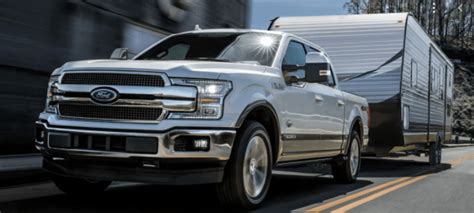
Ford 2.7L EcoBoost vs. 3.5L EcoBoost: A Comprehensive Comparison
In the realm of pickup trucks and SUVs, Ford's EcoBoost engines have garnered widespread recognition for their blend of power, efficiency, and reliability. Two prominent members of this engine family are the 2.7L and 3.5L EcoBoost V6 engines. Both engines have earned accolades for their performance and capabilities, leaving many drivers wondering which one is the better choice for their needs.
Horsepower and Torque: A Battle of Brawn
When comparing the Ford 2.7L EcoBoost and 3.5L EcoBoost engines, the first aspect that comes to mind is their power output. The 2.7L engine produces a respectable 325 horsepower and 400 lb-ft of torque, while the 3.5L engine boasts an impressive 400 horsepower and 500 lb-ft of torque. This significant difference in power is noticeable on the road, with the 3.5L engine providing more effortless acceleration and passing power, especially when towing heavy loads or navigating steep grades.
Towing and Payload Capacity: Hauling Heavy Burdens
For those who rely on their trucks for towing and hauling tasks, the 3.5L EcoBoost engine offers a clear advantage. With a maximum towing capacity of 14,000 lbs and a payload capacity of 3,250 lbs, the 3.5L engine outshines its smaller sibling. The 2.7L EcoBoost, while still capable, has a maximum towing capacity of 7,700 lbs and a payload capacity of 2,000 lbs. Therefore, if your work or lifestyle demands substantial towing and hauling capabilities, the 3.5L EcoBoost is the clear choice.
Fuel Efficiency: Balancing Power and Economy
Despite their impressive power output, both the 2.7L and 3.5L EcoBoost engines deliver commendable fuel efficiency. The 2.7L engine achieves an EPA-estimated 20 MPG city / 27 MPG highway in a rear-wheel-drive configuration, while the 3.5L engine manages 18 MPG city / 24 MPG highway. In real-world driving conditions, both engines can achieve even better fuel economy, particularly on the highway, making them viable options for those seeking a balance between performance and efficiency.
Off-Road Prowess: Conquering Rugged Terrain
For adventure enthusiasts and off-road aficionados, the 2.7L EcoBoost engine might be the preferred choice. Its lighter weight and more compact size make it more agile and maneuverable in challenging off-road situations. The 3.5L engine, while still capable off-road, may feel somewhat heavier and less nimble in tight trails or rocky terrain. Additionally, the 2.7L engine's lower torque output can be an advantage in off-road scenarios where precise throttle control is essential.
Reliability and Maintenance: A Long-Term Perspective
Both the Ford 2.7L and 3.5L EcoBoost engines have earned a reputation for reliability and durability. However, the 2.7L engine has a slight edge in terms of long-term reliability, with fewer reported issues and a lower overall cost of ownership. The 3.5L engine, while still reliable, may require more frequent maintenance and repairs as it accumulates mileage. Regular maintenance and adherence to the manufacturer's recommended service intervals are crucial for ensuring the longevity and optimal performance of both engines.
Choosing the Right Engine: Tailoring to Your Needs
Ultimately, the choice between the Ford 2.7L EcoBoost and 3.5L EcoBoost engines depends on your specific requirements and preferences. If you prioritize power, towing capacity, and payload capabilities, the 3.5L engine is the clear winner. However, if you prioritize fuel efficiency, off-road prowess, and long-term reliability, the 2.7L engine might be the better fit. Consider your driving habits, typical loads, and intended use to make an informed decision.
Additional Considerations: Beyond Engine Choice
In addition to engine selection, there are other factors to consider when choosing a Ford truck or SUV. These include:
Test Drive and Expert Advice: Making an Informed Decision
To make a well-informed decision, it's highly recommended to schedule test drives of both the Ford 2.7L EcoBoost and 3.5L EcoBoost engines in the truck or SUV model of your choice. This hands-on experience will allow you to feel the difference in power, handling, and ride quality firsthand. Additionally, consulting with automotive experts, reading reviews, and conducting thorough research can provide valuable insights and help you make the right choice for your needs.
Conclusion: Power, Efficiency, and Versatility United
The Ford 2.7L and 3.5L EcoBoost engines stand as shining examples of engineering excellence, combining impressive power with commendable efficiency. While the 3.5L engine offers superior towing and hauling capabilities, the 2.7L engine excels in fuel efficiency and off-road performance. By carefully considering your requirements and preferences, you can select the engine that best aligns with your driving style and intended use. Whether you prioritize raw power or a balanced blend of performance and economy, the Ford 2.7L and 3.5L EcoBoost engines deliver exceptional experiences on and off the road.

